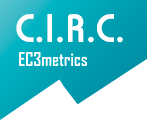Acesso ou Registar-se para submeter um artigo.
Condições para Submissão
Como parte do processo de submissão, os autores são obrigados a verificar a conformidade da submissão em relação a todos os itens listados a seguir. As submissões que não estiverem de acordo com as normas serão devolvidas aos autores.- O registro e login são necessários para enviar itens on-line e para verificar o status de envios recentes. Ir a Iniciar sesión a una cuenta existente o Registrar una nueva cuenta en https://revistas.um.es/iqual
- A submissão não foi previamente publicada, nem foi submetida à consideração de qualquer outra revista (ou foi fornecida uma explicação nos Comentários para o endereço da revista).
- Como parte do processo de envio, os remetentes são obrigados a verificar se seu envio atende a todos os elementos, mostrados abaixo. As remessas que não atenderem a estas diretrizes serão devolvidas.
-
Os autores devem fornecer referências a trabalhos semelhantes que já tenham sido publicados, ou que estejam actualmente a ser considerados por outra revista. Se o trabalho já tiver sido apresentado num documento, os detalhes devem ser fornecidos numa carta de apresentação. A revista terá em conta a publicação do trabalho anteriormente apresentado como um breve resumo ou cartaz numa conferência, mas não como um artigo completo. Se forem incluídas tabelas, ilustrações ou mais de 200 palavras de texto previamente publicadas, o autor apresentará ao Secretariado uma autorização escrita do detentor dos direitos de autor. Incluindo cópias de todas as cartas de autorização. Note que, se considerado apropriado, o software de verificação de plágio pode ser aplicado ao seu manuscrito durante o processo de revisão editorial.
- O título, o resumo e as palavras-chave estão em conformidade com os requisitos acima.
- A apresentação do artigo com o resumo (títulos/parágrafos).
- O texto, o tamanho da fonte e as margens seguem as indicações acima.
- O texto obedece aos requisitos bibliográficos e estilísticos indicados nas Diretrizes para Autores, que podem ser encontradas nas Diretrizes para Autores em Submissões.
- As instruções em Segurar uma avaliação anônima devem ser seguidas.
- Deve ser fornecido o número de identificação ORCID de todos os autores, bem como a contribuição de cada autor.
- A agência ou organismo que financia a pesquisa deve ser declarada.
- O arquivo de apresentação está no formato OpenOffice, Microsoft Word, RTF ou WordPerfect.
- O texto adere aos requisitos estilísticos e bibliográficos delineados no arquivo Author Guidelines, que aparecem em About the journal.
- Sempre que possível, são fornecidas URLs para referências.
- O prazo para recebimento de artigos é até 15 de setembro de cada ano.
Política de Privacidade
Os nomes e endereços fornecidos nesta revista serão usados exclusivamente para os serviços prestados por esta publicação, não sendo disponibilizados para outras finalidades ou a terceiros.







